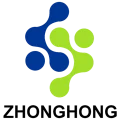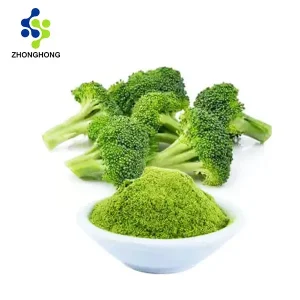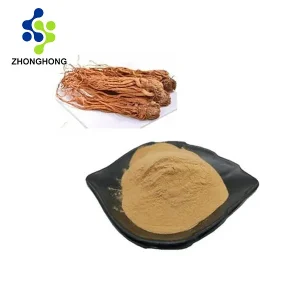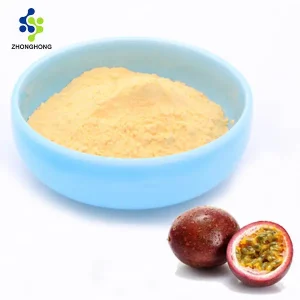The Ultimate Guide to Pharmaceutical & Food Grade Glycerol (Glycerin) – Source, Benefits & Quality
1. What is Glycerol (Glycerin)?
Glycerol, commonly known as glycerin (USP/Ph. Eur. nomenclature: Glycerol), is a simple polyol compound. It’s a colorless, odorless, viscous liquid with a sweet taste, highly soluble in water and hygroscopic (water-attracting). Chemically classified as a trihydric alcohol (propane-1,2,3-triol), it serves as a fundamental building block in lipids (fats and oils) and is a cornerstone ingredient across pharmaceuticals, food & beverage (F&B), personal care, and industrial applications. Its unique combination of safety, solubility, humectancy, and solvent properties makes it indispensable.
2. 제품 출처, 화학적 특성 및 식별
원천: Primarily derived through:
Saponification: Hydrolysis of triglycerides (fats/oils) during soap manufacturing.
Transesterification: Reaction of triglycerides with methanol (biodiesel production).
Synthetic Routes: From propylene via epichlorohydrin (less common for high-purity grades).
Zhonghong Focus: 활용한다 sustainable, non-GMO vegetable oils (e.g., coconut, palm kernel, soy) via advanced transesterification and purification processes, ensuring traceability and purity.
화학적 특성:
CAS 번호: 56-81-5
분자식(MF): C₃H₈O₃
분자량(MW): 92.09 g/mol
EINECS 번호: 200-289-5
모습: Clear, colorless, syrupy liquid.
용해도: Miscible with water and alcohols; insoluble in hydrocarbons.
Boiling Point: 290°C (554°F) with decomposition.
Melting Point: 17.8°C (64°F).
Density: ~1.261 g/cm³ at 20°C.
Viscosity: ~1410 mPa·s at 20°C.
Hygroscopicity: Strongly absorbs moisture from the atmosphere.
3. What is the Best Glycerol? Key Selection Criteria
Identifying the “best” glycerol hinges on application-specific requirements and stringent quality parameters. Pharmaceutical Grade (USP/Ph. Eur.) represents the pinnacle of purity and safety for sensitive applications. Key differentiators include:
Ingredient & Purity: High-purity (≥99.5%) glycerol, USP/Ph. Eur. compliant. Free from impurities like diethylene glycol (DEG), ethylene glycol (EG), chlorinated compounds, aldehydes, and heavy metals beyond strict limits.
효능 및 준수성:
Pharmaceutical: Solvent, humectant, plasticizer, lubricant (suppositories), cryoprotectant. Meets compendial standards (USP <471>, Ph. Eur. monograph 04/2013:0497).
Food (FCC Grade): Humectant, sweetener, solvent, bulking agent. GRAS (Generally Recognized As Safe) by FDA; complies with JECFA specifications.
화장품: Superior humectant, emollient, viscosity modifier, solvent. Compliant with global cosmetic regulations (EU, FDA, China).
기원: Sourced from sustainable, traceable vegetable oils (non-GMO preferred). Origin impacts sustainability profile.
용법:
Pharma: Formulations (syrups, elixirs, creams, ointments, suppositories), API processing.
Food/Beverage: Moisture retention (baked goods, confectionery), sweetness/texture modifier, solvent for flavors/colors, freezing point depressant.
화장품: Moisturizers (creams, lotions), hair care (conditioners), soaps, toothpaste.
Typical Concentrations: Varies widely (e.g., 1-15% in cosmetics, 5-30% in pharma liquids, up to 99.5% as API/excipient).
Target Users: Pharmaceutical manufacturers, nutraceutical formulators, F&B producers, cosmetic chemists, research institutions.
Health Benefits & Daily Intake:
Humectancy: Draws water into skin, improving hydration and barrier function (topical).
Laxative: Oral glycerol draws water into the bowel (osmotic effect). Typical dose: 2-6g (as suppository/enema); oral solutions vary. Consult a physician.
Energy Source: Metabolized similarly to carbohydrates (~4.32 kcal/g), though not a primary dietary source.
Safe Daily Intake: JECFA established an “Acceptable Daily Intake (ADI) not specified” for glycerol, indicating very low toxicity at levels consumed in food. Doses for laxative effects are specific and temporary.
주의사항 및 부작용:
Topical: Generally non-irritating/non-sensitizing at typical use levels. High concentrations (>50%) may cause transient stinging or stickiness.
Oral (Laxative): Can cause abdominal discomfort, cramping, excessive bowel movements, dehydration. Contraindicated in ileus, undiagnosed abdominal pain.
General: Ensure use of food/pharma grade. Avoid industrial grade containing toxic impurities (DEG/EG). Hygroscopic – requires tight packaging.
4. 회사 소개: 산시 중홍 투자 기술 유한회사
Shaanxi Zhonghong Investment Technology Co., Ltd. is a vertically integrated high-tech enterprise specializing in the research, development, advanced manufacturing, and global distribution of premium botanical extracts and fine chemicals for the chemical, material science, and life science sectors. Our core expertise lies in cutting-edge extraction, isolation, and purification technologies for plant-derived bioactive compounds.
Core Competencies: Natural plant extracts, cosmetic actives, nutraceutical & pharmaceutical intermediates, natural pigments, dietary supplements, food & beverage additives, natural sweeteners.
Scientific Rigor:
R&D Powerhouse: Strategic partnerships with 5 leading universities establishing joint innovation laboratories.
IP 포트폴리오: Holder of 20개 이상의 특허 and a proprietary global exclusive compound library.
Quality Infrastructure:
최첨단 분석: 장착됨 HPLC(고성능 액체 크로마토그래피), UPLC (Ultra-Performance LC), GC-MS(가스크로마토그래피-질량분석법), NMR (Nuclear Magnetic Resonance Spectroscopy – implied by “superconducting”), ensuring identity, purity, and trace contaminants detection.
Purity Benchmark: Consistently achieves purity standards exceeding industry norms by >20%.
글로벌 도달 범위: 광범위한 공급 네트워크 제공 80개국 이상 across Asia, Europe, and the Americas. Trusted partner for custom synthesis 그리고 bespoke ingredient solutions for multinational pharmaceutical corporations, research institutes, and leading FMCG brands.
Industry Legacy: 28년 of unparalleled experience in sourcing, processing, and delivering high-purity bioactive compounds.
5. Glycerol Benefits: Health & Functional Advantages
Skin Health (Topical): Enhances skin hydration (corneotherapy principle), improves barrier function, smooths texture, offers protective emolliency.
Pharmaceutical Versatility: Essential solvent for poorly soluble APIs, stabilizer, cryoprotectant (biologics), lubricant, osmotic agent (laxatives, ophthalmic solutions).
Food & Beverage Performance: Critical humectant preventing staling, texture modifier, mild sweetener (60% sucrose sweetness), solvent for flavors/colors, improves freeze-thaw stability.
Industrial Applications: Plasticizer (cellulosics), antifreeze, lubricant, chemical intermediate (alkyd resins, explosives).
6. Glycerol Usage Guidelines
집중: Varies drastically by application (e.g., 1-5% humectant in lotions, 15-30% in cough syrups, >95% in some pharma APIs). Adhere to formulation-specific pharmacopoeia or regulatory limits (FCC, INCI).
호환성: Compatible with water, alcohols, glycols. Avoid strong oxidizing agents. Test compatibility with specific APIs/excipients.
Processing: Incorporate into aqueous phases. Pre-dissolving in part of the water phase can aid mixing due to high viscosity. Account for hygroscopicity during storage and processing.
7. Glycerol Safety & Handling Precautions
General: Low acute toxicity. Non-mutagenic, non-carcinogenic.
Handling: Use standard chemical handling procedures (gloves, eye protection). Minimize skin contact with concentrated forms to avoid dehydration/stickiness.
저장: Store in tightly sealed, corrosion-resistant containers (stainless steel, HDPE) in a cool, dry place. Protect from moisture absorption.
Impurity Risk: Crucially, ensure supply chain integrity. Use only certified USP/Ph. Eur./FCC grade glycerol with documented absence of toxic impurities like DEG or EG, which cause severe poisoning. Zhonghong’s rigorous QC guarantees this.
8. Glycerol Product Specification & Certificate of Analysis (COA)
Zhonghong’s Pharmaceutical Grade Glycerol meets or exceeds USP/Ph. Eur. specifications. A typical COA includes:
Table: Glycerol (USP/Ph. Eur.) Quality Control Specifications
| 매개변수 범주 | 테스트 항목 | 사양 | Test Method (Example) |
|---|---|---|---|
| 신원 | Infrared Spectrometry | Conforms to Reference Spectrum | USP <197> / Ph. Eur. 2.2.24 |
| Assay (Purity) | Glycerol Content | ≥ 99.0% – 100.5% | USP <345> Chromatography / Ph. Eur. 04/2013:0497 |
| Related Substances | Ethylene Glycol (EG) | ≤ 0.10% | USP <345> GC / Ph. Eur. 2.2.28 |
| Diethylene Glycol (DEG) | ≤ 0.10% | USP <345> GC / Ph. Eur. 2.2.28 | |
| 중금속 | 납(Pb) | ≤ 1 ppm | USP <231> J / ICP-MS |
| 비소(As) | ≤ 1 ppm | USP <232> / ICP-MS | |
| 수은(Hg) | ≤ 0.1ppm | USP <232> / ICP-MS | |
| 카드뮴(Cd) | ≤ 0.1ppm | USP <232> / ICP-MS | |
| 잔류 용매 | Methanol | ≤ 50 ppm | USP <467> GC-FID |
| 미생물학 | Total Aerobic Microbial Count (TAMC) | ≤ 100 CFU/g | USP <61> / Ph. Eur. 2.6.12 |
| Total Yeast & Mold Count (TYMC) | ≤ 10 CFU/g | USP <61> / Ph. Eur. 2.6.12 | |
| Bile-Tolerant Gram-Negative Bacteria | 10g에는 없음 | USP <62> / Ph. Eur. 2.6.13 | |
| 대장균 | 10g에는 없음 | USP <62> / Ph. Eur. 2.6.13 | |
| 살모넬라균 종 | 10g에는 없음 | USP <62> / Ph. Eur. 2.6.13 | |
| 황색포도상구균 | 1g에 없음 | USP <62> / Ph. Eur. 2.6.13 | |
| 녹농균 | 1g에 없음 | USP <62> / Ph. Eur. 2.6.13 | |
| Specific Tests | Chloride | ≤ 10 ppm | USP <221> / Ph. Eur. 2.4.4 |
| Sulfate | ≤ 20 ppm | USP <221> / Ph. Eur. 2.4.13 | |
| Chlorinated Compounds | ≤ 30 ppm | USP <471> / Ph. Eur. 2.5.8 | |
| Aldehydes | ≤ 10 ppm | USP <345> / Ph. Eur. 04/2013:0497 | |
| 점화 시 잔류물 | ≤ 0.01% | USP <281> / Ph. Eur. 2.4.14 | |
| Physical | Refractive Index | 1.470 – 1.475 (20°C) | USP <831> / Ph. Eur. 2.2.6 |
| Specific Gravity | 1.248 – 1.264 (25°C) | USP <841> / Ph. Eur. 2.2.5 |
9. Advanced Glycerol Production Process
Zhonghong employs a state-of-the-art, integrated production system for vegetable-derived glycerol:
Feedstock Pretreatment: Purification of sustainably sourced, non-GMO vegetable oils.
Transesterification: Reaction with methanol under controlled catalysis to yield Fatty Acid Methyl Esters (FAME – biodiesel) and crude glycerol.
Acidulation & Separation: Acid treatment to split soaps, followed by centrifugation for glycerol-rich phase isolation.
1차 정제: Vacuum distillation to remove water, methanol, salts, and fatty acids.
Secondary Purification: 고급의 multi-stage fractional distillation under high vacuum and/or molecular distillation to achieve high purity.
Decolorization & Filtration: Activated carbon treatment and precision filtration to remove trace color bodies and particulates.
Polishing: Final ion-exchange or electrodialysis for ultralow chloride and sulfate levels.
cGMP Compliant Packaging: Filling into clean, approved containers (drums, totes) under controlled environment.
10. Key Glycerol Applications
제약품: Solvent (oral liquids, parenterals), humectant (creams/ointments), plasticizer (film coatings), lubricant (tablets, suppositories), cryoprotectant (vaccines, biologics), API.
Nutraceuticals & Food: Humectant (protein bars, baked goods), solvent (flavors, colors, vitamins), sweetener, texture modifier, freezing point depressant (ice cream), preservative aid.
화장품 및 개인 관리: Humectant (moisturizers, lotions, serums), emollient, viscosity modifier, solvent, oral care agent (toothpaste), hair conditioner.
Industrial: Antifreeze, plasticizer (cellophane, resins), lubricant, mold release agent, chemical intermediate (polyols, alkyd resins, explosives).
11. Stringent Glycerol Quality Control (QC)
Zhonghong’s QC philosophy is anchored in Quality by Design (QbD) principles and adherence to cGMP (current Good Manufacturing Practices). Our vertically controlled process ensures batch-to-batch consistency and traceability. Rigorous testing occurs at multiple stages:
수입 원자재 검사: Verification of vegetable oil quality certificates and identity testing (FFA, PV, IV).
공정 중 제어(IPC): Real-time monitoring of critical parameters (pH, temperature, pressure, distillation cuts, conductivity) during purification stages. IPC samples analyzed via rapid techniques (Titration, GC, Refractive Index).
Final Product Release Testing: Comprehensive analysis per relevant monograph (USP/Ph. Eur./FCC) by our ISO 17025 accredited laboratory, utilizing HPLC, GC, ICP-MS, ICP-OES, UV-Vis, Karl Fischer titration, and advanced microbiological methods. Full compliance with ICH Q3D Elemental Impurities and USP <232>/<233> is ensured.
안정성 연구: Ongoing real-time and accelerated stability programs to guarantee shelf-life and storage conditions.
Documentation & Traceability: Electronic Batch Records (EBR) and comprehensive documentation ensure full traceability from raw material to finished product shipment.
12. Reliable Glycerol Packaging & Global Logistics
포장: Available in cGMP-compliant options:
Small Scale: 25kg HDPE drums with double LDPE liners.
Medium Scale: 250kg UN-certified HDPE drums.
Bulk: 1000kg IBC totes (high-density polyethylene, stainless steel options) or ISO tank containers (food/pharma grade).
저장: Store below 30°C (86°F) in original, tightly sealed containers protected from moisture.
유통기한: Typically 24-36 months from date of manufacture when stored properly.
글로벌 물류: Expertise in handling hygroscopic materials. Efficient global shipping via air, sea, or land freight. Compliant with IMDG/IATA/ADR regulations. Temperature-controlled options available. Dedicated logistics team ensures timely delivery worldwide.
13. Glycerol: Health Mechanisms, Innovation & Research Frontiers
건강 메커니즘:
Skin Hydration: Modulates aquaporin-3 (AQP3) expression in keratinocytes, enhancing water transport and stratum corneum hydration. Forms hydrogen bonds with water, creating a protective humectant film.
Osmotic Laxative: Increases intraluminal water content and colonic peristalsis.
Cryoprotection: Forms hydrogen bonds with biomolecules, preventing ice crystal damage during freezing.
Industrial Innovation:
Green Chemistry: Catalytic conversion to value-added chemicals (propylene glycol, acrolein, lactic acid).
Bio-based Polymers: Key monomer for polyglycerols, polyesters, polycarbonates.
Fuel Additives: Conversion to solketal (acetone ketal) as an oxygenated fuel additive.
Zhonghong R&D: Focus on novel purification techniques (membrane separation, continuous chromatography), derivatization for high-value actives, and sustainable biodiesel co-product utilization.
연구의 최전선과 과제:
Topical Therapeutics: Enhanced penetration for transdermal delivery, role in barrier repair for atopic dermatitis.
Metabolic Impact: Detailed understanding of glycerol kinase pathway regulation and implications in diabetes/obesity.
Advanced Materials: Nanocomposites, functional hydrogels, bio-lubricants.
Sustainability: Scaling economically viable catalytic processes for glycerol valorization, improving biodiesel production efficiency to reduce glycerol surplus. Zhonghong addresses this via high-purity niche markets and R&D into novel derivatives.
14. Glycerol FAQs (Frequently Asked Questions)
Q1: What’s the difference between Glycerol, Glycerin, and Vegetable Glycerin?
에이: Chemically, glycerol (propane-1,2,3-triol) is the pure compound. “Glycerin” is the commercial term, often synonymous with glycerol, especially USP grade. “Vegetable Glycerin” specifies the source (plant oils), distinguishing it from animal tallow-derived or synthetic glycerol. Pharmaceutical/Food grade implies purity regardless of source.
Q2: Is Vegetable Glycerin safe?
에이: Yes, high-purity USP/FCC Grade Vegetable Glycerin is recognized as safe (GRAS) by the FDA for food and widely approved globally for food, pharma, and cosmetics when used appropriately. Safety depends entirely on purity and grade.
Q3: Can I ingest Glycerin?
에이: Yes, Food Grade (FCC) glycerin is safe for consumption in food products and as a laxative (in specific doses/forms). Never ingest industrial-grade glycerin. Consult a doctor before using as a laxative.
Q4: Why is purity so critical, especially DEG/EG testing?
에이: DEG and EG are highly toxic impurities that can cause fatal poisoning, even in small amounts. Rigorous testing and supply chain control (like Zhonghong’s) are non-negotiable for pharmaceutical and food applications. USP/Ph. Eur. have strict limits.
Q5: What are the main applications of USP Grade Glycerol?
에이: Essential in syrups, elixirs, creams, ointments, suppositories, capsules, tablet coatings, vaccine stabilizers, and as a solvent for APIs. Requires highest purity and documentation (C of A, DMF/ASMF).
Q6: How should I store Glycerol?
에이: In tightly sealed, moisture-proof containers (original packaging preferred) in a cool (<30°C), dry place. Minimize headspace exposure to air.
Q7: Does Zhonghong offer custom glycerol grades or derivatives?
에이: Yes. Leveraging our joint labs and compound library, we specialize in custom purity specifications, blends, and research-scale synthesis of glycerol derivatives (e.g., mono/diacetin, glyceryl esters, ethers).
Q8: Is Zhonghong’s Glycerol Kosher/Halal certified?
에이: Kosher and Halal certification is available upon request for specific batches/production lines.
15. Where to Buy Premium Glycerol & Request Samples
Source Reliable, High-Purity Glycerol (USP/Ph. Eur./FCC Grade) from a Trusted Global Supplier:
Visit our Website: Explore our full portfolio of plant extracts and fine chemicals: https://www.aiherba.com
Contact Us for Quotes & Technical Data:
이메일: liaodaohai@gmail.com
무료 샘플을 요청하세요: Contact us today to discuss your specific glycerol requirements (grade, quantity, packaging) and 무료 샘플을 요청하세요 of our premium Pharmaceutical or Food Grade Glycerol for your evaluation and formulation trials.
16. 결론
Glycerol remains an irreplaceable, versatile, and safe compound underpinning countless products in health, nutrition, and industry. Selecting the optimal grade – particularly USP/Ph. Eur. for pharmaceuticals 또는 FCC for food – is paramount, demanding rigorous quality control focused on ultra-high purity (>99.5%) 그리고 absolute exclusion of toxic impurities like DEG and EG. Shaanxi Zhonghong Investment Technology Co., Ltd., with its 28-year legacy, cutting-edge purification technology (HPLC, UPLC, NMR), university partnerships, and cGMP-compliant manufacturing, stands as a global leader in supplying traceable, sustainable, and exceptionally pure vegetable-derived glycerol. We bridge the gap between premium natural sources and the exacting demands of advanced industrial applications, committed to innovation and unwavering quality for partners worldwide.
17. 참고문헌
United States Pharmacopeia (USP). “Monograph: Glycerin.” USP-NF.
European Pharmacopoeia (Ph. Eur.). “Monograph: Glycerol (0497).” 10th Edition.
Food Chemicals Codex (FCC). “Monograph: Glycerin.” 12th Edition.
Joint FAO/WHO Expert Committee on Food Additives (JECFA). “Glycerol.” Monographs & Evaluations.
U.S. Food and Drug Administration (FDA). “Code of Federal Regulations Title 21: Substances Generally Recognized As Safe (GRAS).”
Cosmetic Ingredient Review (CIR). “Safety Assessment of Glycerin as Used in Cosmetics.” Final Report, 2016.
National Center for Biotechnology Information (2023). PubChem Compound Summary for CID 753, Glycerol.
Fluhr, J. W., et al. (2008). “Glycerol regulates stratum corneum hydration in sebaceous gland deficient (asebia) mice.” Journal of Investigative Dermatology.
Zheng, Y., et al. (2021). “Catalytic Valorization of Glycerol to Value-Added Chemicals.” ChemSusChem.
International Council for Harmonisation (ICH). “Guideline Q3D (R2) on Elemental Impurities.” (2022).






리뷰
아직 리뷰가 없습니다.